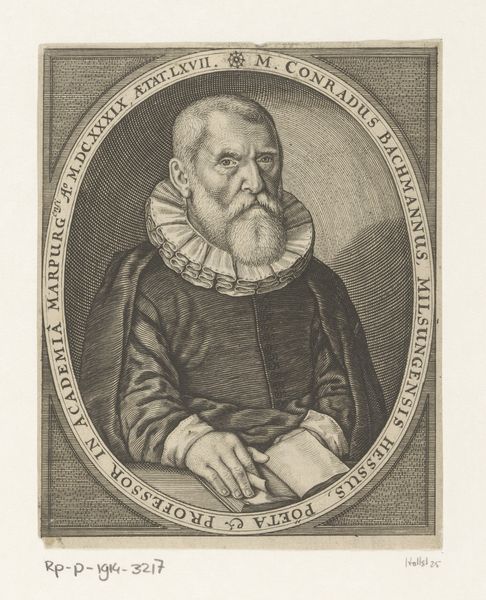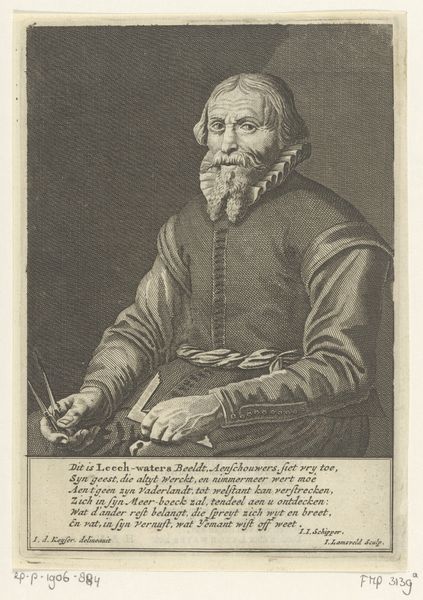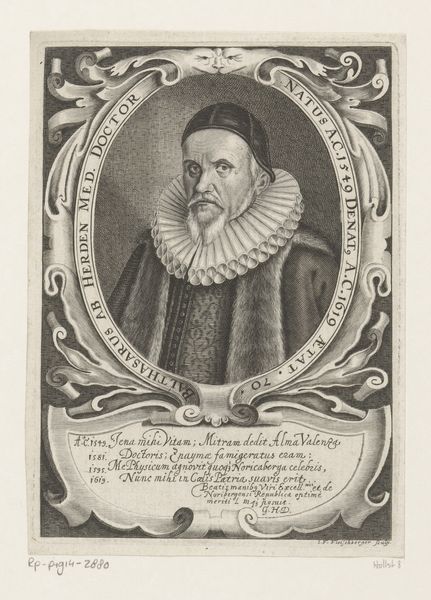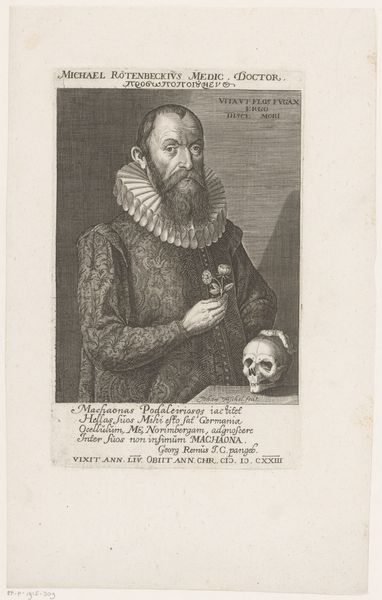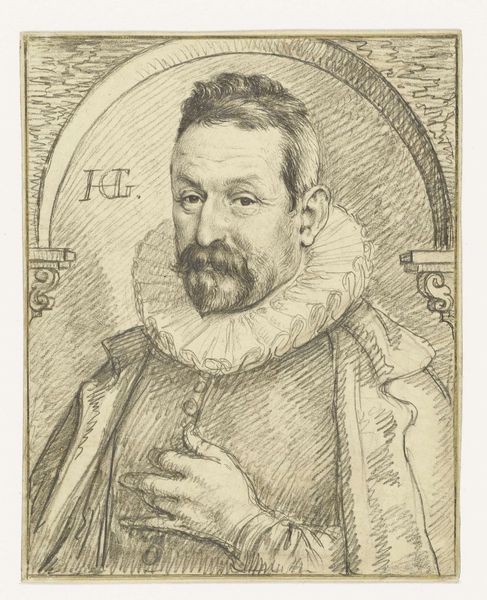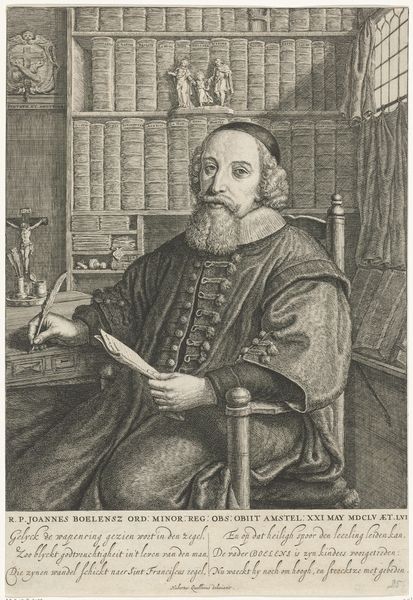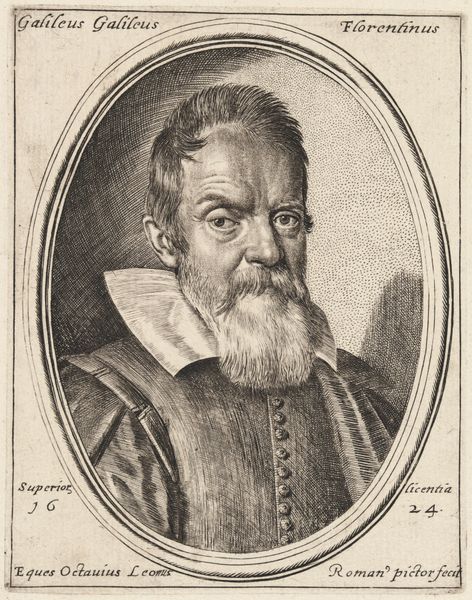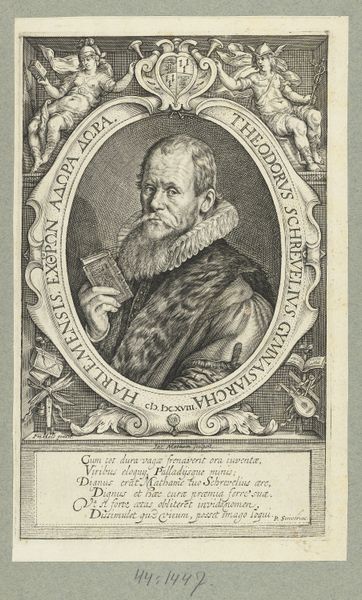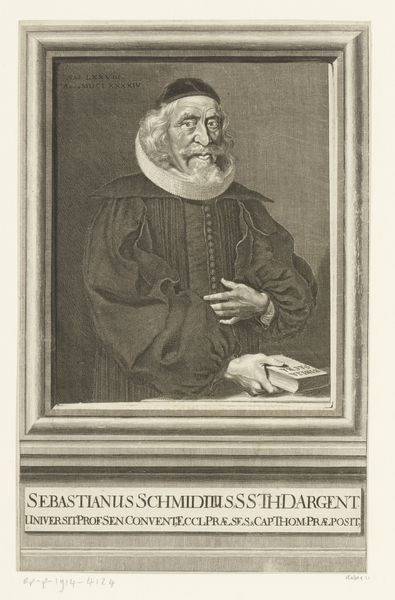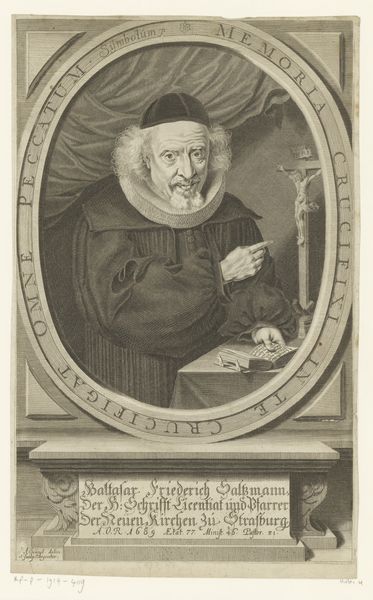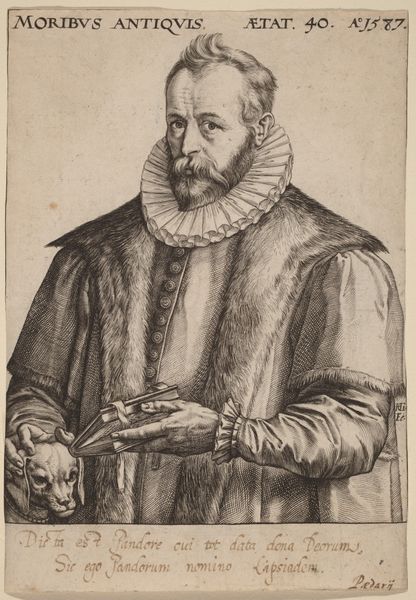
Portrait of Joannes Neyen, General of the Order of Franciscan Friars, Ambassador in Trier 1608
0:00
0:00
drawing, print, engraving
#
portrait
#
drawing
#
baroque
# print
#
portrait reference
#
vanitas
#
history-painting
#
engraving
Dimensions: Plate: 13 1/8 × 9 5/16 in. (33.3 × 23.6 cm) Sheet: 14 5/16 × 10 1/4 in. (36.3 × 26 cm)
Copyright: Public Domain
Editor: This engraving from 1608 by Jan Muller is titled "Portrait of Joannes Neyen, General of the Order of Franciscan Friars, Ambassador in Trier". It depicts a man holding a skull, and the overall tone feels rather somber and contemplative. How do you interpret this work? Curator: It's fascinating to consider this portrait through the lens of power, religion, and mortality in the Baroque era. Joannes Neyen was not just a friar, but also a diplomat during a tumultuous period in European history. Notice the 'vanitas' symbols: the skull, the hourglass. They serve as potent reminders of the fleeting nature of earthly power and life. The inscription even alludes to his age; that detail situates this image in the complicated relationship of identity with time, with life. Editor: So the inclusion of these elements isn’t just about aesthetics, but also about making a statement about Neyen's identity and role within the society? Curator: Exactly. And it speaks to the power dynamics at play. Neyen, as an ambassador and religious leader, was tasked with negotiating peace during the Eighty Years' War, a conflict deeply rooted in religious and political strife. This image then becomes an intersectional point for those conflicts: class, identity, nation. He holds the symbol of death in one hand, which seems to question earthly matters considering the religious commission. Do you think Muller's status impacted this representation? Editor: That’s really insightful. It makes me think about how the symbols, particularly the skull, might have been viewed differently depending on someone’s position in society. It challenges any straightforward reading. Curator: Precisely! It allows us to ask pertinent questions about class, death, and their mediation during war periods, not unlike ours today. By understanding the history behind Jan Muller’s creation, it gives rise to considering it beyond the art object. Editor: I’ve certainly gained a deeper appreciation for the social and historical complexities embedded in this artwork. Curator: As have I; this exchange has helped clarify how we perceive these important portraits.
Comments
No comments
Be the first to comment and join the conversation on the ultimate creative platform.
